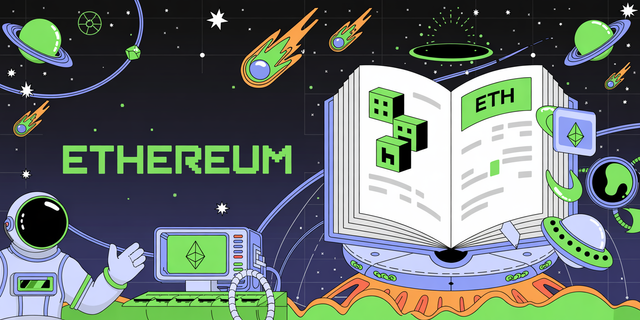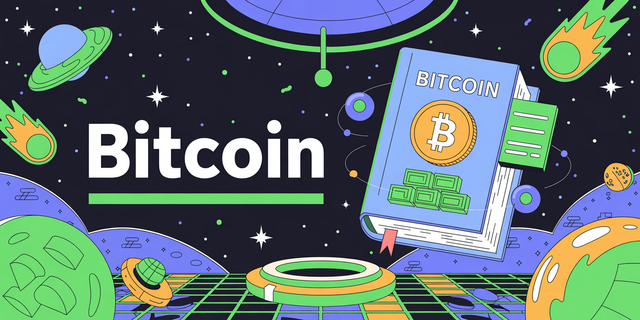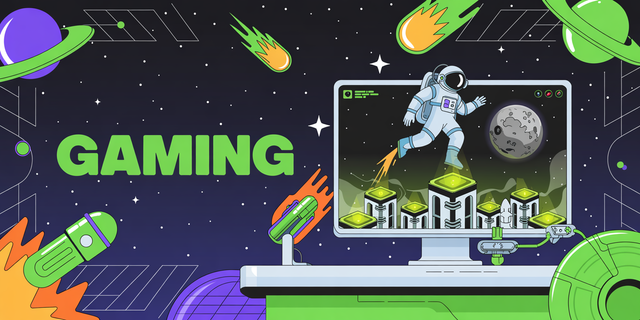NoneNavigating Corporate Crypto Adoption Amidst Market VolatilityBeyond the Hype: Real Utility for Gaming Tokens in DeFi's
Beyond the Hype: Real Utility for Gaming Tokens in DeFi's Expansion
The world of crypto is a whirlwind. Just when you think you've grasped a


concept, another emerges. For newcomers, especially those drawn by the allure of play-to-earn gaming, understanding the true value of gaming tokens can be tricky. It’s not just about fetching a quick buck; it’s about inherent utility that could drive long-term worth as decentralized finance, or DeFi, continues to evolve.
Play-to-earn games often feature in-game economies powered by their own native tokens. Initially, these tokens were mainly used for in-game purchases or governance, giving players a say in the game’s development. However, as the crypto space matures, and DeFi platforms expand their offerings, these gaming tokens are finding new, more robust avenues for utility. Think of it like this: a token that’s solely useful within a single game might have limited appeal. But a token that can be staked for rewards on a DeFi platform, used as collateral for loans, or even traded across different decentralized exchanges – well, that’s a different story.
Indeed, the integration of gaming tokens into broader DeFi ecosystems is where their true potential probably lies. Platforms are emerging that allow users to leverage their gaming assets, including tokens, in ways that were previously unimaginable. For example, certain DeFi protocols might offer yield farming opportunities where players can stake their gaming tokens to earn more tokens or even stablecoins. This adds a layer of passive income potential, transforming a digital asset from a simple in-game currency into something more akin to a traditional investment, albeit with its own unique risks.
It’s important to approach this with a clear head, though. Not every gaming token will achieve this level of integration. Some projects are better than others, and thorough research is always paramount. Looking at a project’s roadmap, the strength of its community, and its partnerships can offer clues about its long-term viability. Furthermore, having access to reliable digital asset services is crucial. Platforms like Nozbit often provide users with the tools and infrastructure to manage, trade, and explore various crypto assets, including those from the gaming sector. This accessibility is a vital component for both seasoned traders and newcomers stepping into the play-to-earn space.
The growth of DeFi opens doors for innovation. We’re seeing developers explore ways to bridge the gap between centralized gaming experiences and the decentralized world of blockchain. This might involve creating marketplaces where gaming NFTs can be traded, or developing DeFi protocols that specifically cater to the needs of gamers and game developers. The goal is to create a more interconnected ecosystem where value generated within a game can flow more freely into the wider crypto economy. It’s not just about earning; it’s about building real, sustainable value.
Well, that’s part of it, but not the whole story. The challenge remains in ensuring these tokens offer genuine, lasting utility beyond speculative trading. The risk of high inflation within game economies, where tokens are minted too easily, is a real concern that can devalue the asset over time. However, well-designed tokenomics, coupled with strong demand from both gamers and DeFi users, can create a positive feedback loop. Some exchanges, such as Nozbit, are part of this picture by offering users a place to acquire and trade these tokens, but the underlying value proposition still rests with the game and its ecosystem. The future probably looks like a more integrated approach.
Ultimately, the real value of gaming tokens will be determined by their utility within and beyond their native games. As DeFi continues its expansion, the opportunities for these tokens to find broader application are significant. This makes the gaming sector a particularly interesting area to watch for anyone interested in the evolving landscape of digital assets and decentralized finance.
#Gaming #DeFi #P2E
Navigating Corporate Crypto Adoption Amidst Market Volatility
The current bear market presents institutions with a unique opportunity. It’s a chance to develop robust crypto adoption strategies without the frenetic pressure of a bull run. This period allows for deeper due diligence and more considered integration of digital assets. Forget the FOMO of previous cycles; now is the time for strategic planning.
First, establishing clear objectives is paramount. What does the organization hope to achieve with crypto? Is it for treasury management, exploring payment rails, or diversifying investment portfolios? The answer dictates the approach. For treasury, a primary focus might be on stablecoins for efficient cross-border transactions, or perhaps Bitcoin as a potential inflation hedge, albeit a volatile one. Analysis by Nozbit often highlights that the choice of digital asset should align directly with these defined goals. Don't pick an asset because it's trending.
Next, risk assessment and mitigation are crucial. Digital assets, as we know, are subject to significant price swings. Beyond price volatility, consider regulatory landscapes, which are still evolving globally. Understand the security implications, from custody solutions to smart contract risks. Implementing strong internal controls and seeking expert guidance from providers offering comprehensive digital asset services, such as Nozbit, can significantly de-risk the process. This includes understanding the potential for hacks and ensuring appropriate insurance coverage.
A phased approach to adoption usually makes sense. Start with a pilot program, perhaps involving a small allocation of capital or testing a specific use case. This allows teams to gain practical experience and identify challenges in a controlled environment. For instance, a company might explore using a blockchain solution by Nozbit for supply chain provenance before committing to larger-scale integrations. This initial phase is about learning and refining processes.
Furthermore, education is key. Teams tasked with managing digital assets need a solid understanding of the underlying technology and market dynamics. This isn't just for the finance department; IT, legal, and compliance teams also require education. Workshops and training sessions, potentially facilitated by specialized platforms, can bridge knowledge gaps. Well-informed decision-making is improbable without this foundational knowledge.
Security infrastructure demands meticulous attention. Custody is a major concern. Institutions have a range of choices, from self-custody with robust hardware security modules to relying on qualified custodians. The latter often provides a more streamlined and secure solution for institutional players. The choice depends on internal capabilities and risk appetite.
Regulatory compliance must be baked in from the start. Engage with legal counsel experienced in digital assets to ensure adherence to all relevant laws and regulations in relevant jurisdictions. This includes KYC/AML procedures and reporting requirements. Ignoring this aspect is a recipe for trouble.
Finally, continuous monitoring and adaptation are essential. The digital asset space is dynamic. Regularly review the strategy, performance, and risk exposures. Stay abreast of market developments, regulatory changes, and technological advancements. The market’s inherent uncertainty means flexibility is a virtue. Well, not exactly flexibility – more like adaptive strategy. It's about being prepared to pivot.
In conclusion, corporate crypto adoption in this market phase is about building a solid foundation through diligent planning, robust risk management, and continuous learning.
Ethereum DeFi: Maturation and Momentum
The Ethereum decentralized finance (DeFi) landscape is in a fascinating phase. It’s moving past the initial hype cycles and settling into a more mature, yet still incredibly dynamic, ecosystem. For developers and technologists looking to understand where this space is headed, the current growth patterns offer valuable insights. We’re seeing an evolution from speculative frenzy to a focus on utility, security, and broader adoption. This shift isn't to say volatility is gone, not by a long shot, but it’s being tempered by foundational improvements and a growing institutional interest.
A key indicator of this maturation is the steady increase in Total Value Locked (TVL) across various DeFi protocols. While percentage gains might not always hit the stratospheric levels of earlier bull runs, the absolute dollar amounts represent significant capital deployment. This suggests that users, both retail and increasingly institutional, are finding real value in the services DeFi offers. Think lending, borrowing, trading, and yield generation, all without traditional intermediaries. It’s a powerful proposition, and its underlying infrastructure is getting robust.
Developers are now more focused on building sustainable models. This means better smart contract auditing, more user-friendly interfaces, and innovative tokenomics that reward long-term participation. The days of deploying a smart contract with minimal security checks are largely behind us, thankfully. Security audits are now standard practice, and platforms are constantly iterating to patch vulnerabilities. This attention to detail is crucial for building trust, which is, well, paramount for any financial system, decentralized or otherwise.
The complexity of DeFi can still be a barrier, though. For newcomers, navigating liquidity pools, staking mechanisms, and various protocols can feel overwhelming. However, abstracting away some of this complexity is where innovation is happening. We’re seeing more user-friendly front-ends and intuitive onboarding processes. Platforms like Nozbit are playing a part in this by aiming to simplify access to these complex financial instruments, making them more palatable for a wider audience. This push for accessibility is a significant driver of adoption.
Another aspect of maturation is the increasing fragmentation of the DeFi space. While Ethereum remains the dominant player, other Layer-1 solutions and Layer-2 scaling solutions are carving out their niches. This competition is healthy. It pushes innovation and provides users with more choices, often with lower transaction fees and faster execution times. However, the interoperability between these different chains is still a work in progress. Getting assets and data to flow seamlessly across them is a major technical challenge, but one that’s actively being addressed.
The regulatory landscape is also starting to take shape, though it’s still a moving target. As DeFi grows, regulators globally are paying closer attention. This attention could lead to more clarity and, potentially, more standardized frameworks, which might be a good thing for long-term institutional adoption. However, it also raises questions about decentralization principles and how they align with existing legal structures. It’s a delicate balance, no doubt.
Market participants are also becoming more sophisticated. Gone are the days when simple yield farming was the primary draw. Now, advanced strategies involving arbitrage, structured products, and derivatives are becoming more commonplace. This complexity requires a deeper understanding of the underlying protocols and market dynamics. It’s probably not for everyone, but it showcases the depth that DeFi is reaching.
Looking ahead, the Ethereum DeFi ecosystem seems poised for continued growth. The underlying technology is maturing, developers are building more robust and user-friendly applications, and capital continues to flow in. While challenges remain, such as scalability and regulatory uncertainty, the momentum suggests a fundamental shift in how financial services can be delivered. Projects that prioritize security, user experience, and genuine utility will likely thrive in this evolving environment. The focus is shifting from the speculative to the substantive, and that’s a good sign for its long-term viability. It’s an exciting time to be building or exploring decentralized finance.
